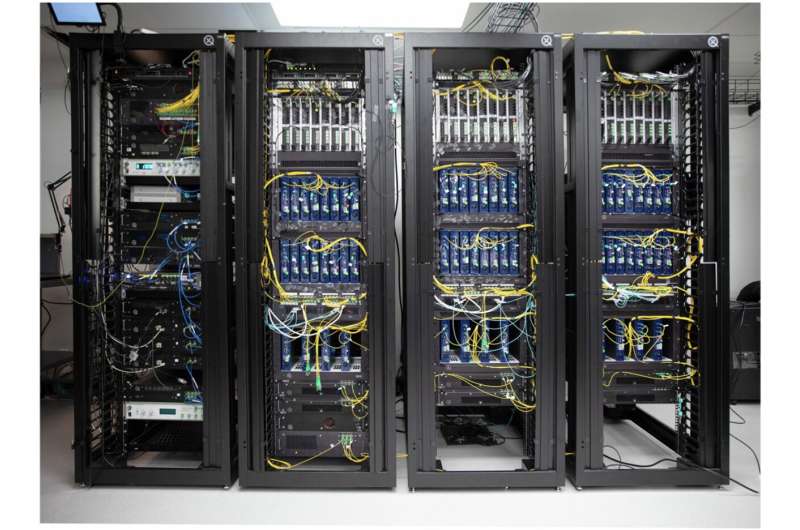A team of engineers, physicists and computer specialists at Canadian company, Xanadu Quantum Technologies Inc., has unveiled what they describe as the world’s first scalable, connected, photonic quantum computer prototype.
In their paper published in the journal Nature, the group describes how they designed and built their modularized quantum computer, and how it can be easily scaled to virtually any desired size.
As scientists around the world continue to work toward the development of a truly useful quantum computer, makers of such machines continue to come up with design ideas. In this new effort, the research team built a quantum computer based on a modular design. Their idea was to build a single basic box using just a few qubits for the simplest of applications. As the need arises, another box can be added, then another and another—with all the boxes working together like a network, as a single computer.
As each box, or quantum server rack, is added, the processing power grows. The team further suggests that thousands of racks could be tied together via fiber cables, creating a massive quantum computer with massive processing abilities. What’s more, the researchers have made the entire system photon-based, eliminating the need to connect photon-based parts with traditional electron-based parts.
To test their ideas, the researchers built a prototype—a network of four server racks using 84 squeezers, which resulted in a computer with 12 physical qubits. The first rack is somewhat different than the other three.

It holds the input lasers while the other three house quantum components divided into five main subsystems: sources, where the photon-based qubits are created; a buffering system that stores the qubits; a refinery that multiplexes the qubits to improve quality and create entangled qubit pairs; routing, which assists with entanglement and clustering; and the QPU, which creates finished spatial links in cluster states and carries out other functions. They also note that because the system is entirely photonic, it does not need to be cooled—it runs at room temperature.
The research team tested their system by creating a unique type of entangled state with billions of modes and were pleased with the results, suggesting that they showed their system is capable of carrying out complex and large-scale computations with a high degree of fault tolerance.
More information:
H. Aghaee Rad et al, Scaling and networking a modular photonic quantum computer, Nature (2025). DOI: 10.1038/s41586-024-08406-9
Xanadu: xanadu.ai/blog/lighting-up-the … -horizon-with-aurora
© 2025 Science X Network
Citation:
World’s first scalable, connected, photonic quantum computer prototype developed (2025, January 31)
retrieved 31 January 2025
from
This document is subject to copyright. Apart from any fair dealing for the purpose of private study or research, no
part may be reproduced without the written permission. The content is provided for information purposes only.

